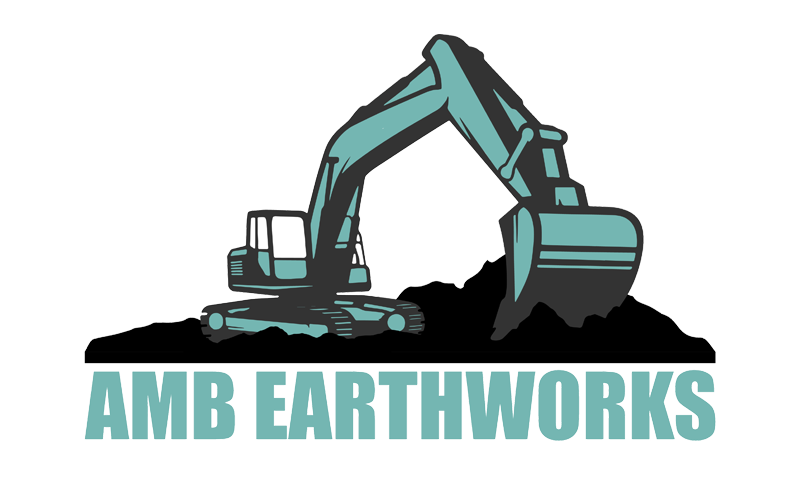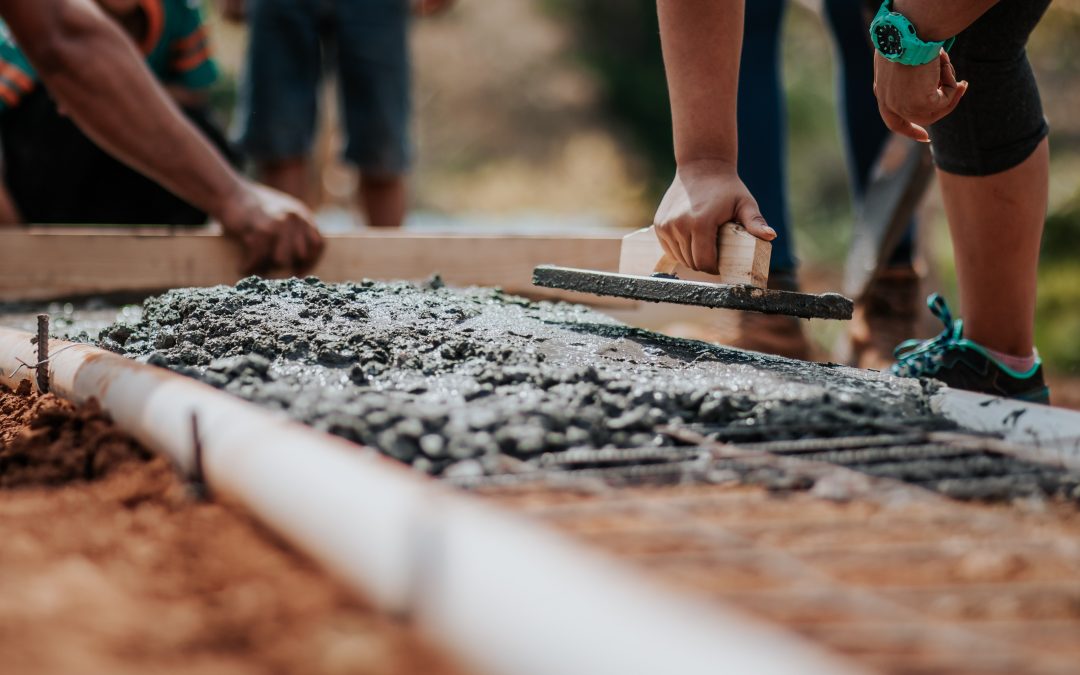Concrete slabs are a common choice for building foundations, driveways, patios, and other structures. They are durable and versatile but require proper preparation of the ground before pouring to ensure a smooth and level surface, prevent cracking and sinking, and improve drainage and insulation.
Whatever you need, AMB Earthworks have the expertise, tools, and machinery to prepare your site for concrete slabs.
What Goes into Preparing the Ground for Concrete?
Proper preparation of the ground is vital for the successful laying of concrete slabs. Correct preparation will prevent cracks from forming in the concrete and provide a stable foundation.
The process begins with clearing the site of structures, vegetation, and debris. Once clear, the appropriate dimensions for the slab are determined and marked out. The soil from this area is then dug out, and the surface is leveled and compacted, along with a layer of gravel or crushed stone. A base layer of gravel or crushed rock is added over the excavated area – these subgrade layers should be compacted, making it dense by reducing pore space. A formwork is then installed around the perimeter using timber boards or metal edging, slightly higher than the finished slab level, and can be secured with stakes or braces.
Time and effort on these steps will help you create a durable and versatile concrete slab for your project.
What Tools Are Required for Ground Preparation?
You’ll need various tools for ground preparation, depending on the stage of the preparation process and the size and shape of the site.
For site preparation, you may need a sledgehammer, spade, pick, rack, and wheelbarrow to clear and dig the site. If you have a sloped or uneven area, use a string line and a spirit level to ensure the ground is level before pouring the concrete.
For bed preparation, you may need a trowel, float, plate compactor, tamper, and rake to compact, level, and smooth the subgrade layers. If you have clay soil, you may need to add more gravel or crushed stone to improve drainage and prevent cracking. If you have sandy soil, you may need to add more water and cement to make the concrete more robust and less prone to erosion. If you have a large area to cover, you can use a plate compactor or a mechanical tamper to compact the soil and gravel layers.
With so many factors to consider, getting professional earthworks advice is wise.
Common Mistakes to Avoid During Ground Preparation
Some common mistakes you want to avoid are:
Improper excavation depth: The depth should match the slab’s and base material’s thickness. To avoid this, measure and mark the area of the slab carefully before digging. Use stakes and strings to outline the perimeter and check for levelness.
Inadequate soil compaction: If the soil is not compacted enough, it may settle or shift over time, causing the slab to crack or move. To avoid this, use gravel or sand as a base material to fill the excavation and provide drainage. Spread and compact the subgrade evenly using a plate compactor or a roller.
Lack of a vapour barrier: If a barrier isn’t installed, the slab may absorb water and become damp, mouldy, or cracked. Install a layer of plastic sheeting over the base material, making sure to overlap and seal the edges.
Consulting with an earthworks expert can help you avoid these mistakes and more.
The Role of Weather in Ground Preparation
The best seasons to prepare the ground for concrete in New South Wales are spring and autumn, when the temperatures are moderate, and the rainfall is low. Rain can make the subgrade wet and unstable, affecting the compaction and levelling of the soil. Frost can reduce the strength and durability of the slab. High temperatures can cause rapid water evaporation from the concrete, leading to cracking, shrinkage, and finishing difficulties. To avoid these problems, pour concrete in dry, warm conditions, preferably above 3°C and below 35°C.

